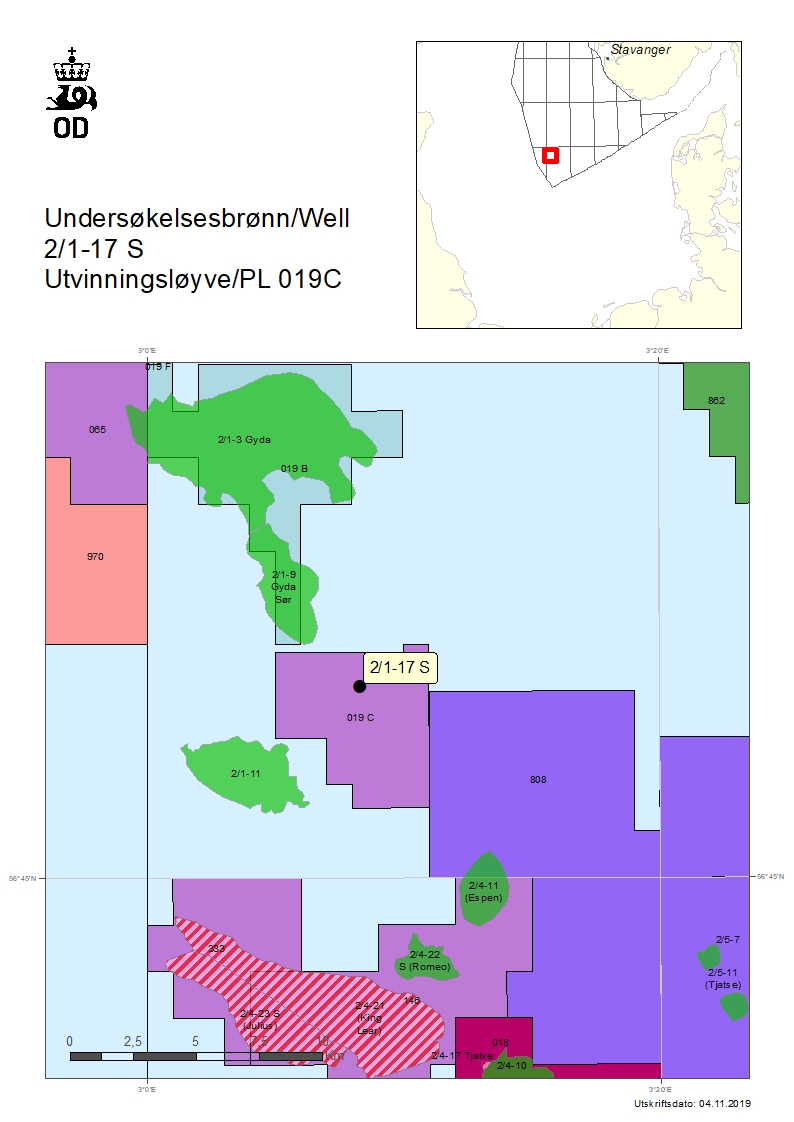Minor oil discovery south of the Gyda field in the North Sea – 2/1-17 S
08/11/2019 Aker BP ASA, operator of production licence 019 C, has concluded the drilling of wildcat well 2/1-17 S.
The well was drilled about 10 kilometres south of the Gyda field in the southern part of the North Sea, and about 280 kilometres southwest of Stavanger.
The primary exploration target for the well was to prove petroleum in Upper Jurassic reservoir rocks (the Ula Formation). The secondary exploration target was to prove petroleum in deeper reservoir rocks in the Jurassic and Triassic (the Eldfisk, Bryne and Skagerrak Formations).
The primary exploration target was not present in the well. In the secondary exploration target, the Eldfisk Formation was encountered with a layer of about five metres of oil-bearing sandstones with good reservoir quality. The oil/water contact was not encountered. The Bryne and Skagerrak Formations were not drilled.
Preliminary estimates place the size of the discovery between 0.5 and 1.5 million standard cubic metres (Sm3) of recoverable oil equivalent. The discovery is assessed as not commercial.
The well was not formation-tested, but extensive volumes of data have been collected.
This is the second exploration well in production licence 019 C, which was awarded in 1998.
Well 2/1-17 S was drilled to a vertical depth of 4322 metres and a measured depth of 4334 metres below sea level. The well was terminated in the Tyne Group in the Upper Jurassic.
Water depth at the site is 66 metres. The well will now be permanently plugged and abandoned.
Well 2/1-17 S was drilled by the Maersk Interceptor drilling facility, which will now drill development wells in production licence 001 B on the Ivar Aasen field in the North Sea, where Aker BP ASA is the operator.

Updated: 10/02/2025